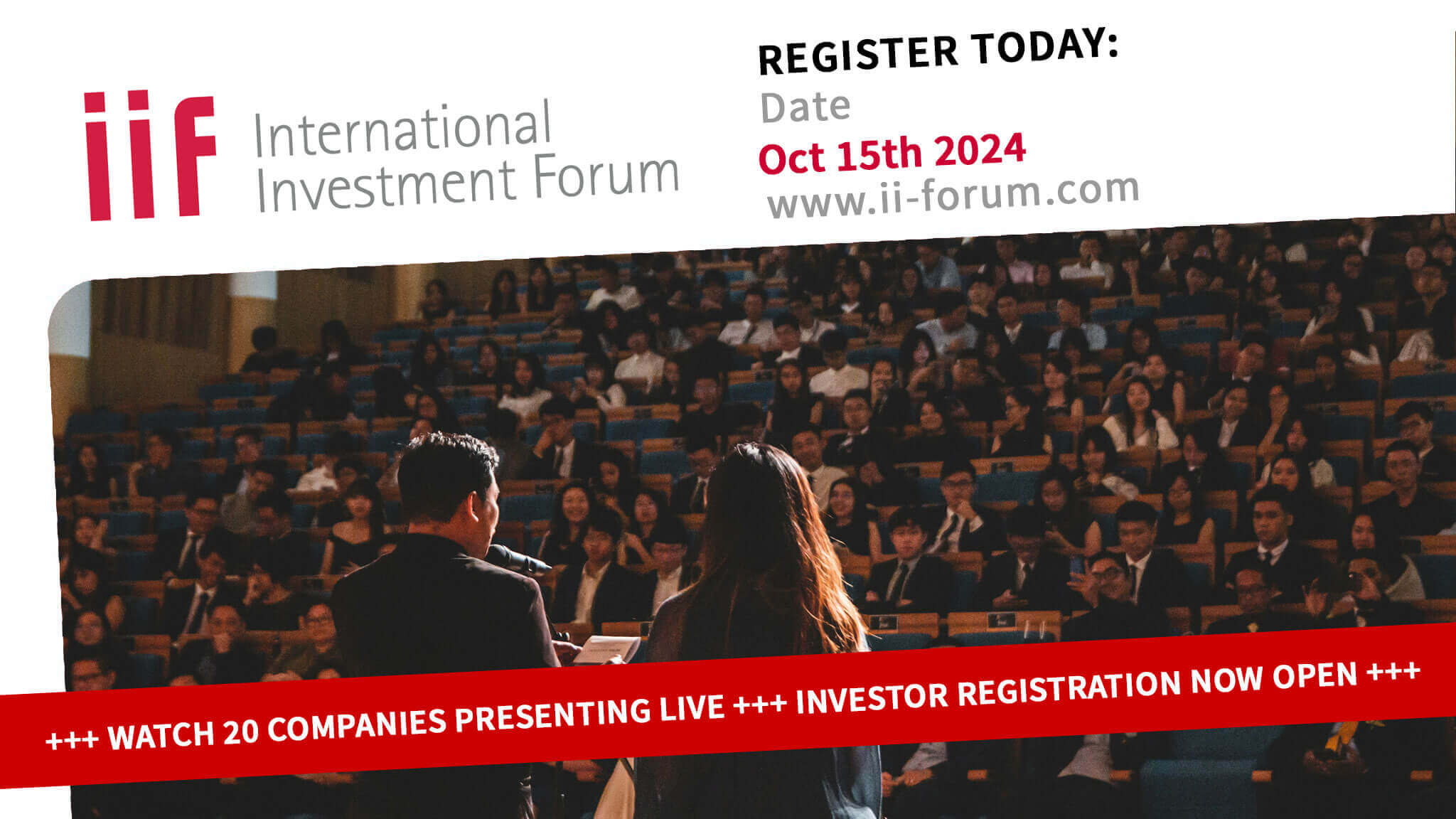October 2nd, 2024 | 07:45 CEST
Desert Gold, Barrick Gold, Alibaba – Gold Rush Fever in Africa and Asia
The US Federal Reserve recently cut interest rates, with further cuts expected. Lower interest rates make gold more attractive as an interest-free investment. Demand for gold is increasing among both institutional and private investors. Desert Gold Ventures is taking advantage of the current gold boom and is expected to start producing the precious metal in West Africa in the second half of 2025. A prominent neighbour in the West African region is Barrick Gold. The Company is forecasting growth of around 30% in the coming years. Online giant Alibaba, on the other hand, is taking advantage of the latest economic stimuli in China to expand its leadership in the e-commerce sector further. These trends are also catching the eye of prominent investors.
time to read: 5 minutes
|
Author:
Juliane Zielonka
ISIN:
DESERT GOLD VENTURES | CA25039N4084 , BARRICK GOLD CORP. | CA0679011084 , ALIBABA GR.HLDG SP.ADR 8 | US01609W1027
Table of contents:

"[...] Internally we expect the resource to significantly grow the deeper we mine. [...]" Dennis Karp, Executive Chairman, Manuka Resources
Author
Juliane Zielonka
Born in Bielefeld, she studied German, English and psychology. The emergence of the Internet in the early '90s led her from university to training in graphic design and marketing communications. After years of agency work in corporate branding, she switched to publishing and learned her editorial craft at Hubert Burda Media.
Tag cloud
Shares cloud
Gold rush in Mali: Desert Gold Ventures benefits from record prices and strategic location
The gold market is currently experiencing an impressive upswing. The price per troy ounce (oz) has risen from USD 1,848 in October last year to currently USD 2,662 - an increase of around 38%. Exploration companies around the world are benefiting from this gold rush, both Goldshore Resources (ISIN CA38150N1078) in Canada and Desert Gold Ventures in Mali, West Africa (ISIN CA25039N4084).
Desert Gold CEO Jared Scharf has expanded the Company's land position to 440 sq km in recent years. Desert Gold's SMSZ project includes 27 gold zones along the Senegal-Mali shear zone and already contains more than 1 million ounces of gold. The Kenieba Window location, a region known for high-grade gold resources, adds further potential to the project.
The region is home to established gold producers:
- B2 Gold operates the Fekola mine, a cornerstone of their gold production
- Barrick Gold is represented by the highly productive Gounkoto and Loulo mines.
Desert Gold plans to commence gold mining and production in the second half of 2025. This would be a significant milestone for the Company. The expected cash flow should finance further exploration and enable additional strategic options such as acquisitions, dividend payments, or share buybacks.
Scharf sees a significant discrepancy between the current market value of the gold ounces in the ground (about USD 10 per ounce) and the gold spot price (USD 2,500). He is determined to close this gap in value for his shareholders. "At the current market price of USD 2,600 per troy ounce, I believe profit margins in the 50% range are achievable," Scharf said in a current interview.**
Analysts from GBC are optimistic about Desert Gold's prospects. They see the improved regulatory situation as a unique opportunity for the Company to expand its activities. The high price of gold and its proximity to major gold producers also increase the Company's attractiveness as a potential takeover target.
Barrick Gold: Strong growth and agreement in Mali
Barrick Gold is forecasting impressive growth and expects to increase production of gold equivalent ounces by 30% from existing assets by 2030. CEO Mark Bristow emphasizes the Company's strong position with six Tier 1 gold mines and more under development. The long-term plans are based on high-grade ore bodies with industry-leading grades.
Particularly promising are three gold projects in Nevada.** The Goldrush mine is expected to produce 400,000 oz annually by 2028, while the adjacent Fourmile project has grades twice as high as Goldrush. The Leeville project could double or triple the Carlin reserves, further realizing the region's potential.
In addition to gold, Barrick is also expanding its copper portfolio. Two major projects are expected to start production in 2028: the Reko Diq project in Pakistan, which is expected to produce 400,000 tons of copper and 500,000 ounces of gold annually, and the Lumwana Super Pit project in Zambia, which will double the mine's production.
Alongside its growth plans, Barrick is working on a solution to the disputes regarding the Loulo and Gounkoto gold mines in Mali. CEO Bristow is encouraged by the government's recognition of the importance of the Loulo-Gounkoto complex to the Malian economy. Barrick emphasizes its long-term commitment to Mali, with over USD 10 billion in investments over the past 29 years. The efforts to find a solution show that both sides recognize the importance of stable cooperation in Mali's mining sector.** The Company's ability to overcome both operational and geopolitical challenges will be crucial to future success.
Alibaba stock rises after monetary easing in China
Shares of Chinese e-commerce giant Alibaba rose 1.2% in pre-market US trading on Friday. This increase is related to the Chinese central bank's recent monetary policy measures and the government's announcements of fiscal support.
The People's Bank of China cut the reserve requirement ratio for banks by 0.5% to an average of 6.6% and reduced the seven-day reverse repo rate by 20 basis points to 1.5%. These measures are intended to strengthen economic growth and increase liquidity in the banking system.
Analysts view the combination of monetary easing, liberalization of the real estate market and fiscal stimuli as a coherent package of measures to boost aggregate demand in China. The measures are also reflected in the Asian stock markets: the Hang Seng Index in Hong Kong rose by 3.6%, while the Chinese CSI 300 Index gained 4.5%.
US investor Michael Burry currently holds shares in Alibaba worth USD 11.2 million. The stock makes up around 21% of his portfolio. Burry is betting on the long-term growth potential of the Chinese technology and e-commerce sector, with Alibaba playing a key role as the market leader. This view is supported by signs of regulatory relaxation for tech companies in China, which could significantly improve Alibaba's business prospects.
Burry's confidence in Alibaba is also based on the Company's fundamentals: a dominant market position, **high profitability, and solid finances with considerable cash reserves. In addition, Alibaba has initiated extensive share buyback programs and is now paying a dividend - measures that are likely to further support the share price and underpin Burry's investment thesis.

Desert Gold Ventures benefits from rising gold prices and a strategically favorable location in Mali. The Company plans to start gold production in 2025 and sees significant potential in the discrepancy between the current market value of its gold ounces and the spot gold price. Analysts rate the prospects positively, particularly due to the improved regulatory situation and proximity to established gold producers. Barrick Gold is forecasting strong growth, with an expected 30% increase in production by 2030. The Company has a diversified portfolio with promising projects in Nevada and is expanding into the copper sector. The resolution of disputes in Mali and long-term engagement in the region underscore Barrick's ability to overcome geopolitical challenges. Alibaba is benefiting from China's monetary easing, as reflected in a rise in its share price. The Company enjoys the confidence of prominent investors such as Michael Burry and has a dominant market position in China's e-commerce sector. Alibaba's strong fundamentals, share buyback programs, and dividend payments make it an attractive option for investors betting on the long-term growth potential of China's tech sector.
Conflict of interest
Pursuant to §85 of the German Securities Trading Act (WpHG), we point out that Apaton Finance GmbH as well as partners, authors or employees of Apaton Finance GmbH (hereinafter referred to as "Relevant Persons") may hold shares or other financial instruments of the aforementioned companies in the future or may bet on rising or falling prices and thus a conflict of interest may arise in the future. The Relevant Persons reserve the right to buy or sell shares or other financial instruments of the Company at any time (hereinafter each a "Transaction"). Transactions may, under certain circumstances, influence the respective price of the shares or other financial instruments of the Company.
In addition, Apaton Finance GmbH is active in the context of the preparation and publication of the reporting in paid contractual relationships.
For this reason, there is a concrete conflict of interest.
The above information on existing conflicts of interest applies to all types and forms of publication used by Apaton Finance GmbH for publications on companies.
Risk notice
Apaton Finance GmbH offers editors, agencies and companies the opportunity to publish commentaries, interviews, summaries, news and the like on news.financial. These contents are exclusively for the information of the readers and do not represent any call to action or recommendations, neither explicitly nor implicitly they are to be understood as an assurance of possible price developments. The contents do not replace individual expert investment advice and do not constitute an offer to sell the discussed share(s) or other financial instruments, nor an invitation to buy or sell such.
The content is expressly not a financial analysis, but a journalistic or advertising text. Readers or users who make investment decisions or carry out transactions on the basis of the information provided here do so entirely at their own risk. No contractual relationship is established between Apaton Finance GmbH and its readers or the users of its offers, as our information only refers to the company and not to the investment decision of the reader or user.
The acquisition of financial instruments involves high risks, which can lead to the total loss of the invested capital. The information published by Apaton Finance GmbH and its authors is based on careful research. Nevertheless, no liability is assumed for financial losses or a content-related guarantee for the topicality, correctness, appropriateness and completeness of the content provided here. Please also note our Terms of use.




